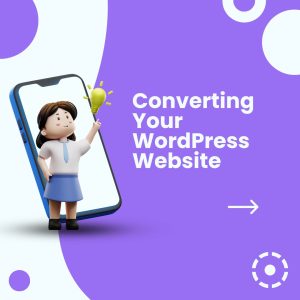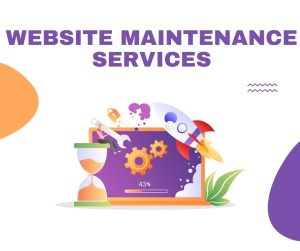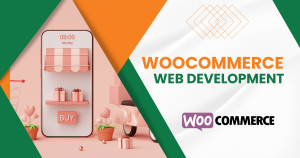Are you looking for ways to open your own eCommerce business? You might be wondering how difficult it is, what steps you need to take and what rules and regulations you must follow. Fortunately, creating an online shop doesn’t have to be incredibly complicated – with the right preparation, knowledge and tools at your disposal setting up a successful ecommerce website has never been easier. In this blog post we’ll explore the fundamentals of making an eCommerce store: from choosing products to selling them online, covering both legal requirements as well as essential marketing strategies.
Why Create an Ecommerce Website?
Ecommerce has been rapidly growing in popularity over the past decade, and for good reason. With the rise of technology and online shopping habits, more and more consumers are turning to online stores to purchase products and services. In fact, studies have shown that global retail ecommerce sales reached a staggering $4.28 trillion in 2020 and are projected to grow even further in the future. This means that there is a huge potential for success in the ecommerce industry, making it an attractive option for entrepreneurs and businesses alike.
Choosing Your Products

The first step to creating your own ecommerce website is deciding what products you want to sell. It’s important to choose something that aligns with your interests and passions, as this will keep you motivated and engaged in your business. Additionally, it’s crucial to research the demand for your chosen products and their profitability. You want to make sure that there is a market for what you’re selling and that you can make a profit from it. Consider conducting market research and competitor analysis to get a better understanding of the current market trends and competition.
Consider hiring a web developer

While there are many do-it-yourself ecommerce platforms available, such as Shopify or WooCommerce, it might be beneficial to hire a professional web developer to build your store. They have the technical expertise and experience to create a customized and user-friendly website that will set you apart from competitors. Not only that, but they can also ensure that your website is optimized for search engines and provide ongoing maintenance and support.
Legal Requirements

Before launching your ecommerce website, it’s important to understand the legal requirements that come with running an online store. This includes registering a business name, obtaining necessary licenses and permits, setting up payment gateways, and complying with data protection regulations. It’s also essential to clearly outline your terms and conditions, return policies, and privacy policies to protect both yourself and your customers.
Get a Domain Name and Web Hosting for Your eCommerce Website

In today’s digital age, creating an online presence for your business is more important than ever. If you’re looking to take your business to the next level, building an eCommerce website is a great way to start. But before you get started, you’ll need to secure a domain name and web hosting. Your domain name is like your online address, while web hosting is like the virtual space where your website lives. With so many options out there, it can be overwhelming to choose the right domain name and web hosting provider for your eCommerce website. However, by doing your research and taking the time to compare your options, you can ensure that your website is not only functional but also reflects your brand’s unique identity.
When choosing a web hosting provider, it’s important to take into account several key factors.
- Reliability and uptime guarantee: A reliable web hosting provider will ensure that your website is always up and running, minimizing the risk of potential downtime.
- Speed and performance: Slow loading times can significantly impact user experience and potentially drive customers away from your site. Look for a hosting provider with high-speed servers to ensure optimal performance.
- Security measures: With online threats becoming increasingly common, it’s crucial to prioritize security when selecting a hosting provider. Look for providers that offer SSL certificates and regular backups to protect your website and customer data.
- Scalability: As your business grows, so will your website traffic. Choose a web hosting provider that allows for scalability and can accommodate increased traffic without compromising site performance.
Select the hosting type and plan that suits your needs

The most prevalent hosting types include shared, VPS, cloud, and WordPress hosting.
Shared Hosting:
This is a popular, affordable option for small businesses and beginner websites. With shared hosting, you share server resources with many other websites. While it may be cost-effective, it can also lead to slower loading times and potential security risks.
VPS (Virtual Private Server) Hosting:
VPS hosting offers a more powerful and customizable option than shared hosting. With VPS, you still share a server with other websites, but each website has its own dedicated resources. This results in faster loading times and better security.
Cloud Hosting:
Cloud hosting utilizes multiple servers to host your website, making it more reliable and scalable compared to traditional hosting options. It’s a great choice for businesses experiencing rapid growth or expecting high traffic volume.
WordPress Hosting:
WordPress hosting is specifically designed for WordPress websites. It offers specialized features to optimize website performance and security for WordPress users.
Choose an eCommerce Platform or Software for Your Website

If you’re looking to start an eCommerce website, choosing the right platform or software is crucial to your success. With so many options available, it can be overwhelming to know where to start. You’ll want to consider factors such as ease of use, customization options, payment gateways, and integrations with other tools. Some popular eCommerce platforms include Shopify, WooCommerce, and BigCommerce, each with their own strengths and weaknesses. It’s important to do your research and choose the platform that best fits your business needs and goals. Once you’ve found the perfect fit, you can start building your online store and watch your business thrive.
Design Your eCommerce Website
When it comes to launching an online business, your website design is one of the most important aspects to consider. Designing your ecommerce website not only involves creating an aesthetically pleasing layout, but also ensuring it is user-friendly and optimized for conversions. Your website should be easy to navigate, have clear calls-to-action, and showcase your products and brand in a way that appeals to your target audience. A good ecommerce website can help build trust with your customers and drive sales, while a poorly designed website can lead to a high bounce rate and ultimately hurt your business. So take the time to carefully design your ecommerce website and watch your business thrive in the online marketplace.
Create Product Listings and Manage Your Inventory

Once your eCommerce website is up and running, it’s time to start adding products to your online store. When creating product listings, be sure to include high-quality images, detailed descriptions, and accurate pricing information. This will help customers make informed purchasing decisions and also improve your search engine rankings. It’s also important to carefully manage your inventory to ensure you have enough stock to fulfill orders, but not so much that you end up with excess inventory. Many eCommerce platforms offer tools to help you track your inventory and set up automatic alerts for when it’s time to restock.
Add Payment Processing to Your Website

If you’re building an ecommerce website, you know just how important it is to have a streamlined payment process. That’s where payment processing comes in – it makes it easy for your customers to make purchases and for you to receive payment. Adding payment processing to your website might seem like a daunting task, but it’s actually a lot easier than you might think. With the right tools and resources, you can integrate payment processing into your site in no time and start selling to customers all over the world. So why wait? Add payment processing to your website today and start growing your business!
Create Product Pages and Categories

When it comes to creating an ecommerce website, optimizing your product pages and categories can make all the difference. After all, the more organized and visually appealing your website is, the more likely customers are to stay and make a purchase. That’s where creating effective product pages and categories comes in. By breaking down your products into specific categories and providing clear descriptions and images, you can make it easier for customers to find what they’re looking for. Not only that, but you’ll also have the ability to showcase the unique features and benefits of each product, helping to solidify the value proposition of your brand. By putting in the extra effort to create high-quality product pages and categories, you can give your ecommerce website a competitive edge and drive increased sales and revenue.
Promote Your eCommerce Website with Digital Marketing

In today’s digital age, more and more businesses are turning to online platforms to reach their customers. If you’re thinking about creating your own eCommerce website, you’re already taking the right steps towards growing your business. However, simply creating a website isn’t enough. With so much competition out there, you need to ensure that your website is seen by potential customers. That’s where digital marketing comes in. By utilizing a variety of strategies like SEO, PPC advertising, and social media marketing, you can effectively promote your eCommerce website to the right audience. With the right approach, you can increase traffic, boost conversions, and ultimately grow your business.
Analyze the Performance of Your eCommerce Website
In today’s world of online shopping, having a well-performing eCommerce website is essential for any business. The success of your online store depends on many factors, including your website’s design, user-friendliness, and functionality. Analyzing the performance of your eCommerce website can help you understand what is or isn’t working, and how you can improve it. By examining metrics such as page loading speed, bounce rate, and conversion rate, you can gain valuable insights into your customers’ behavior and preferences. By optimizing your eCommerce website’s performance, you can enhance the user experience, increase conversions, and ultimately boost your bottom line.
Create a Customer Service Plan for Your Site

If you’re creating an ecommerce website, one of the most crucial things to consider is your customer service plan. In today’s world of online shopping, customers expect more than just a standard shopping experience. They want personalized attention, immediate assistance, and easy access to support. That’s why it’s essential to develop a comprehensive customer service plan that addresses all these needs and more. It should include innovative solutions like chatbots, self-service help centers, and real-time feedback mechanisms. Investing in your customer service plan will not only help you retain existing customers but also attract new ones who value the importance of good service. So, take the time to create a robust and effective customer service plan that reflects your brand’s values and demonstrates your commitment to customer satisfaction.
Starting an ecommerce website can be a tedious and sometimes daunting task, but with the right planning and execution, it is certainly obtainable. Don’t hesitate to take advantage of the resources available to you as you start your business journey— there are tons of user-friendly businesses that make the process easy! Take the steps listed in this blog post; purchase a domain name and hosting, choose a platform or software for your website, design your website, add payment processing services, create product pages and categories, consider digital marketing services for promotion, analyze performance reports consistently , and create a reliable customer service plan. Once you have these components together, you can launch your online store with confidence! With hard work and dedication you can turn your dream of owning an ecommerce business into reality. So don’t wait any longer— take these steps to get started today!





